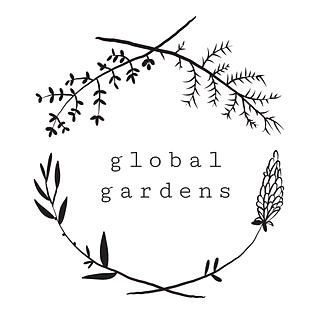GROW YOUR OWN #4: WEEDS AS INDICATORS, WEEDS AS FOOD
- Global Gardens
- May 5, 2024
- 2 min read

Our fourth workshop of the Global Gardens Grow Your Own series was all about weeds - as food and as indicators. The workshop was facilitated by Stephen Watts, grower, forager and director of the charity Ediculture.
Weeds have been described as “plants in the wrong places”. However, according to Stephen, weeds only become a major problem when they are allowed to set seed or spread.
Indeed, there are many benefits to the plants we call weeds:
-Improving fertility, for example, by accumulating minerals from deeper within the ground.
-Protecting the soil from erosion and compaction by keeping the ground covered.
-Potentially providing food and medicine.
Ultimately, “weeds” are doing their thing, filling their niche in the ecosystem and protecting the fertility of the soil.
Weeds can also tell us more about a site - hence why they are also known as "bioindicators". We discussed how plants grow in the places they do due to a number of factors including: topography, geology, soil structure and texture, current and past human activity, animal activity, climate and aspect.
Drawing on our plant identification skills, we identified the a range of plants found growing around the Global Gardens site including:
-Three cornered Leek
-Speedwell
-Hog weed
-Fire weed otherwise known as Rosebay Willowherb
-Nettles
-Forget me not
-Knapweed
-Ox-eye Daisy
On our walk, we foraged a number of edible plants and for lunch, we cooked up Hogweed tips and Nettle.
Weeds as Bioindicators
In the afternoon, we worked in groups to work on identifying how plants as indicators. We used the Weeds as Bioindicators Farmers Field Guide available here.
In the Global Gardens lawn, we found creeping buttercup (Ranunculus repens) and Broad Leafed Dock (Rumex obtusifolius) both indicators of compacted soil. We also found a curious white-striped grass that seemed to be spreading - possibly.
As we moved to the margins of the lawn, we found a more varied coverage including Herb Robert (Geranium robertianum), Clover (Trifolium repens) and Fireweed - otherwise known as Rosebay Willowherb (Chamaenerion angustifolium) as well as a kind of Speedwell (possibly Common Field) (Veronica spp.).
In the herb patch, Bindweed (Convolvulus repens) and Forget-me-not (Myosotis arvensis) both indicators of nutrient rich soil - particularly of carbon alongside Hedge Woundwort (Stachys sylvatica).
In the Global Gardens orchard, alongside brambles, nettles and grass a number of plants of interest were identified including Wild garlic (Allium ursinum), Bird’s Foot Trefoil (Lotus corniculatus) Field Scabious (Knautia arvensis) and Red Campion (Silene dioica).
In the Global Gardens wildlife garden, a wide range of plants were found including Dandelions (Taraxacum officinale), Nettles (Urtica dioica) and Honeysuckle (Lonicera periclymenum). Indications of a disturbed soil.
This workshop demonstrated how much we can learn from rerally tuning int a small area and tuning into what we find growing there.
With thanks to The National Lottery Community Fund in Wales for supporting this workshop.
To find out more about the forthcoming Grow Your Own workshops, check out our eventbrite.
















Comments